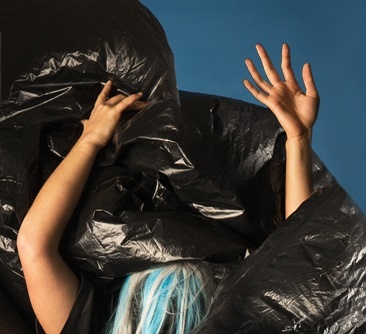Footnote New Zealand Dance presents Transfer, a double bill showcasing the choreographic work of Josh Rutter (NZ/Berlin) and Jeremy Nelson (NZ/New York). Footnote’s key objective for this biannual season is to bring home New Zealand choreographers living abroad to work with the company to develop new innovative contemporary dance. Transfer showcases the works of two unique choreographers, living in two dissimilar creative cities, working in two very different modes of performance. They complement each other well, and provide two ends of a performance spectrum for the ever faithful Footnote audience. The programme is also potentially a great entry into contemporary dance for newbies, featuring an insightful look at pop culture through Josh Rutter’s Tomorrow After All and a pure dance vocabulary in Jeremy Nelson’s Bridges and Doors.
Tomorrow After All is Josh Rutter’s first commission for Footnote New Zealand Dance. Many of us have seen his performance work Dance Like a Butterfly Dream Boy and it seems his time in Berlin has allowed him to delve more deeply into themes inherent in his recent work. Tomorrow After All has clearly been carefully researched, explored and crafted.
Contemporary dance of late praises the exploration of buzzwords ‘risk’ and ‘experimentation’. It might be easy to make assumptions about what these words might imply, however, what ‘risk’ means is dependent on the context; and in the case of dance: the particularities of the company philosophy, funding requirements, the dancers, and the audience demographic. For me, Tomorrow After All nails the notion of ‘experimentation’ within the Footnote context. It pushes us far enough away from the Now 2016 season to see Footnote in a new light and to position the company once again as working into the reaches of performance.
The world of Tomorrow After All is clear and intriguing, one in which anything and nothing is possible. Time travels in slow motion, and its as if we are watching the piece from the inside out, rather than from the outside in. The dancers are Sia-meets-Lady Gaga-meets-Bowie as a starting point, progressing forward in the space with computer-animated sounding voices inquiring as to what to do with ‘it’. Hideously beautiful boos (large black garbage bags taped together to create tubes up to 7 metres long) line the space, with movement potential itching to be revealed through any slight breeze that they encounter. The piece takes its time, always just enough for us to revel in the flick of hair over a shoulder, a slow reveal from inside a boo, and the formation of an alien family portrait.
The beauty of this work cleverly lies in the paradox of the slow deliberate choreographic animation of a boo moving in and out of specific shapes, juxtaposed against the ridiculous uncontrollability of certain tasks, for example, the dancers clambering blind and urgently to keep all boos up off the floor. The magic of these moments is exceptional, we laugh hysterically at the subtle comedic bewilderment of the dancers’ unknowingly phallic creations, and then admire the impossibility/possibilities of the accidental flimsy charm of other constructions.
The movement content of the work is both delicate and articulate and the dancers present an intriguing apathetic connection with each other and with the audience. Faces covered by long wigs, their movement is tentative and sensitive, carefully listening to the space. Each gesture is crafted to draw us into the textural personality of each performer.
In contrast, Jeremy Nelson’s work Bridges and Doors is conceptually more challenging to grasp, with the programme notes describing a loose exploration of dwellings, both architectural and personal. As his third work on Footnote, Bridges and Doors reveals a rigorous movement investigation that aligns itself with the dancing Footnote we know and love. Perceiving this work as a pure dance piece we observe poignant architectural details and clarity of compositional and structural elements. The choreography is such that our eyes know exactly where to look in space and at what time.
The movement vocabulary highlights the peculiarities of each dancer’s movement preferences: Emma Dellabarca with ever surprising and complex movement pathways and precisely designed investigations of movement dynamics and timings; Lana Phillips with her tightly coiled energy reversing away from the floor; Jeremy Beck with a delicacy and carefully measured momentum; Brydie Colquhoun with an enviable ease of strength; and Jared Hemopo a grounded presence, with integrated movement travelling into unusual positions.
Both works in the programme are supported by some exceptional lighting design and operation by Amber Molloy and Sam Mence. In particular, the unconventional timing for lighting states to evolve positively enhances the rhythmical structure and dynamic arc of both works.
In the fantastic June/July line-up of contemporary dance in Auckland you have two more chances to see Footnote in action at Q Theatre, Thursday 30 June and Friday 1 July, 8pm. Or nxt week in Wellington at Massey University Tea Gardens, 6-7 July, 7.30pm.
Copyright © in the review belongs to the reviewer





Comments